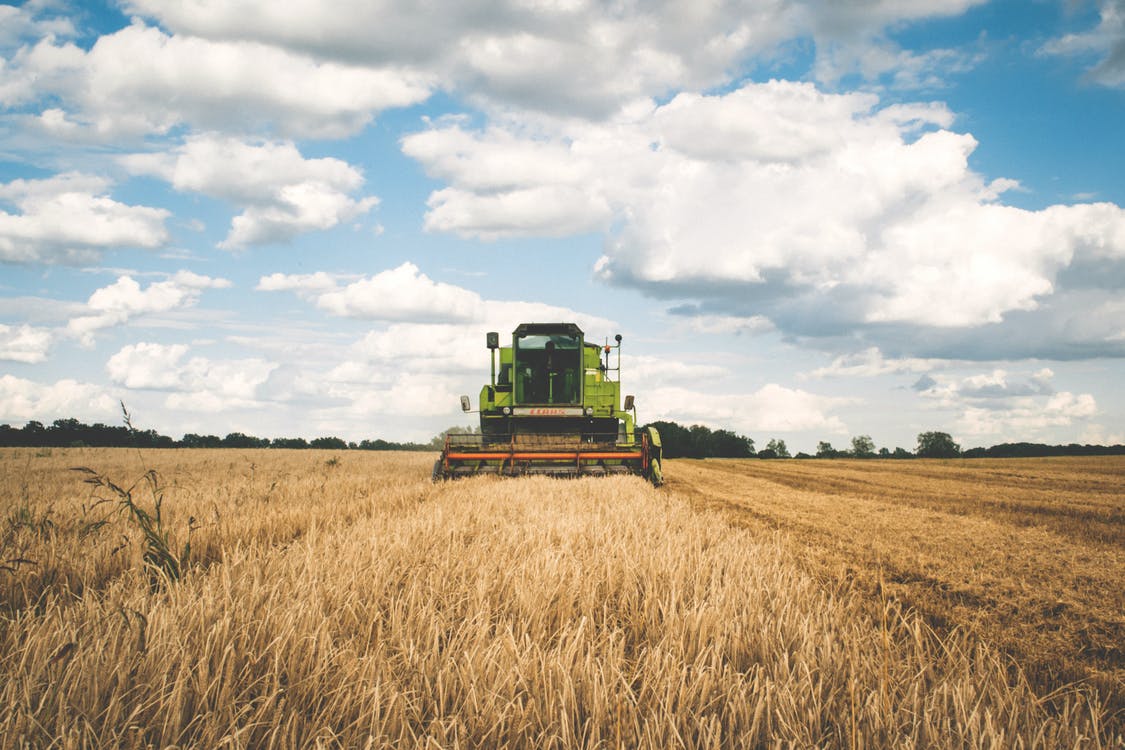The ripening prospects for ‘precision agriculture’
Is the agricultural industry rising to the challenge of growing populations, higher-calorie diets, declining arable land and climate change? These factors place an urgent responsibility on the world’s food industry to raise its productivity. The outlook is challenging, yet there are encouraging signs that agriculture is undergoing a second ‘green revolution’ as new technologies are introduced.
Can ‘precision agriculture’ feed the world?
The world’s population will rise to 9.7 billion by 2050 from 7.3 billion currently – an increase of 2.4 billion from today. (i) Over this same period, climate change and urbanisation is expected to shrink available agricultural land per person by 17%. (ii) These factors are combining to present an ultimatum to the world’s food industry to raise its productivity.
Encouragingly, the global agricultural and chemical (AgChem) sector appears to be rising to the challenge, not just via better yield-enhancing seeds and fertilisers, but by applying connected computing power and rich environmental data to traditional farming methods. Precision agriculture using big data, GPS and ‘internet of things’ connectivity has the potential to revolutionise the way in which is our food produced.
Food production must double between 2015 and 2050
The implication of recent studies is that the current rate of total factor (food) productivity (TFP) will not be enough to prevent food shortages. The required rate is 1.75% per year. Given that the rate of TFP in low-income countries is 1.5% per year, this is where the scope for the biggest increase in yields lies. In round numbers, global food production must double between 2015 and 2050.
Seeds lead the innovation
To maximise resistance from damaging pesticides and insects, the AgChem industry has developed pesticide- and insect-resistant seeds. Genetically Modified (GM) seeds have been successful in raising yields, but only with real significance in developing countries so far. Despite the efficiency gains, the process of GM remains highly controversial.
High hopes for biological crop protection
‘Biological crop chemistry’ is a generalised term for all naturally derived agricultural products that aim to improve crop protection and plant productivity. The focus of current research is on developing crop protection from microbials such as bacteria, fungi, viruses and yeast. Being organic they can avoid the unintended damage to the environment associated with chemical crop protection products.
Precision Agriculture: some examples
Farmers are embracing a range of innovative methods, collectively known as ‘precision agriculture‘. Satellite Global Positioning Systems (GPS) play a central role in combination with internet-connected sensors that produce rich data, enabling more efficient practices. The modern ‘connected farm’ is using a range of techniques such as targeted seeding, precise fertiliser application, farm & field planning, soil sampling & climate optimisation, tractor guidance and yield mapping.
- Environmental sensors can now be placed directly in the soil to record temperature and moisture, allowing farmers to optimise inputs such as irrigation or fertilisers which can be controlled and delivered remotely. A range of devices can monitor sick or pregnant animals, the ripeness of crops, and the damage to crops from weather.
- Rich data – the use of sensors transforms agricultural vehicles and equipment into mobile recording and data transmission systems. The US agricultural machinery company John Deere claims that using sensors to deliver precision agriculture has raised profitability by $5 – $100 per acre and helped to increase productivity by 15%. (iii)
- Tractor guidance is a popular use of satellite technology to reduce costs. When towing machinery in the field, GPS offers exact guidance along parallel lines to avoid retracing routes or missing areas for seeding. GPS also reduces lost working days to weather and darkness, enabling accurate navigation in poor visibility such as rain, fog or at night.
- Improved efficiency – John Deere’s HarvestLab technology uses infrared sensors to detect the quality and macronutrient content of crops and organic inputs like silage in real time during harvesting. The use of in-cab real-time moisture & yield data can drive mechanical variations (such as the height of cutting machinery) that increase throughput and reduce excess fuel use. Tractors and drones can also be fitted with cameras to transmit detailed images of the farm that helps with field planning and yield mapping.
- Programmable machinery is also helping farmers to protect the environment. For instance, once the location of sensitive areas, such as freshwater streams, has been established then the machinery applying synthetic products such as fertilisers can be turned off at these specific locations to ensure pollution is minimised. (vi)
- Regulation is also driving the use of technology. Farmers are incentivised to farm sustainably so that similar quantities of nutrients are returned to the soil as are extracted. The use of sensors connected to data collection programmes is vital in this regard.
Summary
The AgChem sector is entering into a significant phase of innovation to raise productivity in the face of a burgeoning demand outlook thanks to population growth and supply challenges due to declining arable land. Listed companies have a central part to play in undertaking and funding research, introducing new products and applying new techniques to meet this productivity challenge.
While some of the AgChem sector share prices have been correlated with lower agricultural commodity prices, contrarian or long sighted investors may wish to take a cue from significant trends in corporate activity and look for opportunities within the AgChem sector for the longer term.
i Source: Global Harvest Initiative 2016
ii Source: Bayer CEO Financial Times 24 May 2016
iii Source: RCRWireless News February 2016
vi Source: ComputerWeekly.com ‘How John Deere uses connectivity to make farms more efficient’

